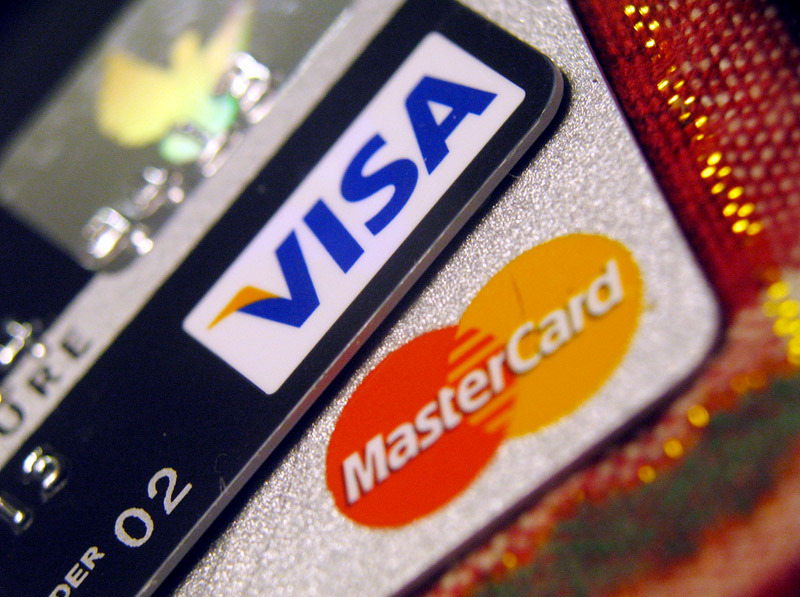The Chip-And-PIN Credit Card Era Starts Today. What You Need To Know
Over the past few months, you may have noticed more retailers adorning their checkout stands with shiny new credit card readers. While those systems still have an area along the side where you swipe your card’s magnetic strip, they also have a smaller slot (typically) on the front where you simply jam gently insert your card. This is all part of the country’s shift toward more secure, but far from perfect, chip-enabled cards that kicks into high-gear today.
To ensure that customers’ credit card information doesn’t end up in the hands of ne’er-do-wells, credit card companies today implemented a shift in liability that means retailers who haven’t implemented the new EMV systems will be responsible for any fraudulent purchases made with a chip-enabled card.
Under the EMV system — named for EuroPay, MasterCard and Visa and already in use in many parts of the world — consumers will use a smartcard embedded with a microchip and provide their PIN (or a signature) to complete a transaction. The chips make reproducing a card difficult for criminals. Even if the credit card information is gathered, without the chip, the card is useless for in-person transactions.
With the liability shift, first announced by Visa and MasterCard back in 2012, non-gas station retailers who don’t have the systems up and running will assume all liability if an incident of fraud occurs.
That means if a merchant is using the old swipe-and-sign system they are responsible for the cost of fraudulent charges if the customer has a chip card. If the merchant has the proper chip-and-PIN system but the bank hasn’t issued a new chip-and-PIN card to the customer, then the bank is liable.
There are some exceptions to the accountability shift. While changes take place today for Visa, MasterCard and Discover, ABC News points out that American Express won’t shift liability until Oct. 16.
Additionally, the change won’t affect some businesses, mainly gas stations, for a while: Automated Fuel Dispensers (pay at pump) transactions won’t make the change until October 1, 2017.
A survey of 600 small business owners compiled by Wells Fargo earlier this year found that more than half of those who accept point-of-sale card payments were unaware of the requirement change to EMV chip card technology.
Nearly 51% of the small business owners that took part in the survey say they were unaware that after October 1, they would be liable to cover the costs of any fraudulent transactions.
Of the business owners who currently accept point-of-sale card payments, only 31% said their systems are capable of accepting chip-enabled cards.
So what exactly does today’s push for retailers to move to EMV chip-enabled card readers mean for consumers?
Not a lot, really — aside from learning a new way to pay at the register and having a bit of peace of mind that your sensitive payment information is more secure.
Instead of simply swiping your card like you’ve done for years, the new terminals require customers to insert their card into a small slot at the front of the machine.
The system then scans the card, reading the chip, which – in my experience – can take a few seconds. The screen then instructs you to either sign your name or enter a PIN and remove the card. (Don’t remove it until you have permission, or you’ll have to repeat the process.)
While the new system is more secure than traditional swipe-and-sign payment methods, customers can continue to use magnetic strip cards if they have them.
Because some businesses haven’t made the transition to EMV, consumers will likely encounter the swipe method for months or years to come.
Still, Sean McQuay, a credit card expert at NerdWallet, tells ABC News that people should be wary of stores forcing them to use the swipe method, noting that the ” terminals will become the path of least resistance for theft.”
Customers should also be aware that the new cards have limitations in their security. For example, it doesn’t necessarily prevent an ID thief from using stolen card numbers for online or phone purchases. There is no such thing as a card that is 100% safe from clever criminals.
Want more consumer news? Visit our parent organization, Consumer Reports, for the latest on scams, recalls, and other consumer issues.


